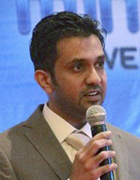
Word ‘smart’ being abused by IoT advocates
Speakers at an event hosted by Cambridge Wireless say the term ‘smart’ is overused to describe connected devices on the internet of things
The word ‘smart’ is being overused and may even be abused by internet of things (IoT) champions, and a more definitive approach should be adopted to what it actually means, according to speakers at a London event hosted by wireless, mobile and internet R&D community Cambridge Wireless.
“We abuse the word ‘smart’. A phone or wristband is labelled smart if it has a step-counting algorithm, but this is not really smart – it’s just functionality,” said Andrzej Wieczorek, business development manager at Finnish services supplier Tieto.
Delegates agreed that the process of providing connectivity and functionality to connected things was no longer really a challenge, but this did not mean these connected things were smart or made business sense.
To be truly smart, it was suggested, things need to be more secure – particularly when it came to user authentication – and capable of being monetised in some way.
“Technology such as Beacons can be used to generate revenue from advertising and enhancing commerce, and they can be extended with additional sensors and capabilities that can be valuable for many stakeholders,” said Neil Garner, founder and CEO of mobile payment specialist Proxama.
Truly smart devices should also include capabilities around co-operation, learning and even emotion – essentially the same criteria applied to assessing the intelligence of humans.
“What we should expect from smart things is an ability to learn and interact – in order to adapt to the context or environment in the best possible way,” said Wieczorek.
“The IoT is now nothing but an internet of isolated islands. Once the things become interoperable and start sharing and using all ‘senses’ to learn the environment, the IoT will become concrete.”
Patrick Levy Rosenthal, founder of Emoshape, an artificial intelligence (AI) start-up based in New York, agreed that AI represented the future user interface of smart things.
“Every day, hundreds of millions of people already communicate their thoughts, desires and emotions to Google or Siri,” he said.
“These intelligent interfaces communicate to us in a language we understand, but how can we consider them to be truly smart if they cannot convey the same emotion back to us? Emotion is as pivotal to language as beauty is to design.”










